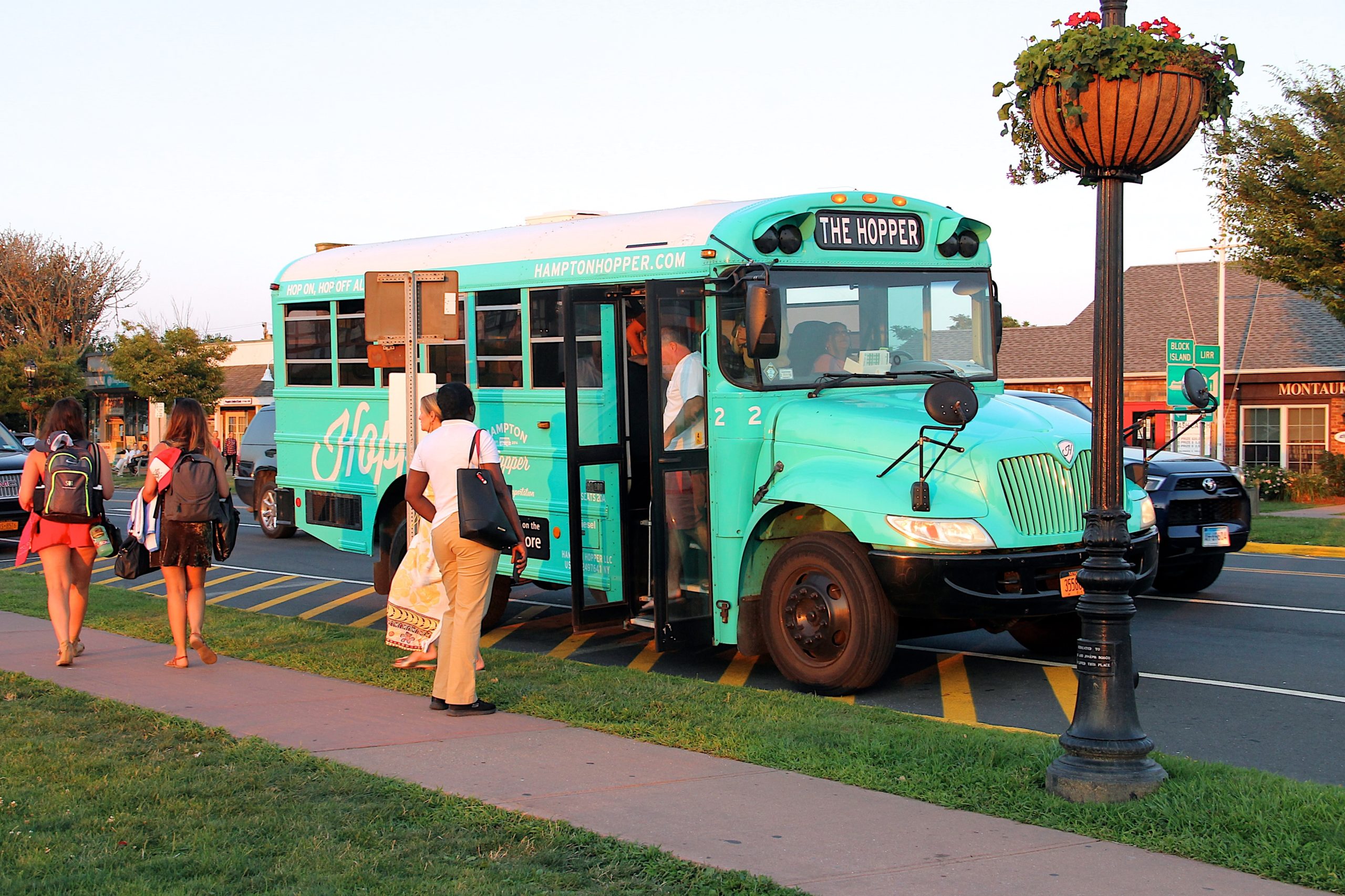
The Hamptons Hopper began running “The Montauk Loop” shuttle routes again this week, and this year is offering rides to the Amagansett and East Hampton Village downtowns as well.
As in the past, the Hopper will make regular stops at a dozen locations around Montauk every half-hour between 10 a.m. and 10 p.m.
Precise schedules of when the bus will stop at each location are available at HamptonHopper.com or via the Hampton Hopper mobile phone app, which also displays the location of each bus.
The bus will make stops at the Kirk Park Beach, the Montauk Chamber of Commerce offices in the center of downtown, the LIRR station, Gosman’s Dock, the Gurney’s Montauk Yacht Club, The Breakers motel, Gurney’s Montauk Resort and Hither Hills State Park.
The East Hampton shuttle will leave from the Chamber of Commerce westbound stop at 12:30 p.m., 3:10 p.m. and 6:10 p.m.
Buses will make a loop out to the Montauk Lighthouse three times a day, at 12:30 p.m., 2:30 p.m. and 5:30 p.m., also from the Chamber of Commerce stop.
Residents are also welcomed to flag down the buses at several other locations that are not regular stops: the Wavecrest Resort, Hartman’s Briney Breezes, Tauk Restaunt and the Montauk Brewing Co. tasting room.
The Hopper routes returned this year after being dormant in 2020 because of the pandemic.
Without the benefit of a $100,000 state grant that had helped fund the free shuttles in 2017, 2018 and 2019, East Hampton Town and Stony Brook Southampton Hospital agreed to pick up the cost of the free shuttle system this year, including the addition of the Amagansett and East Hampton Village leg.
The town will pay just over $100,000 from the town’s reserve surplus and the hospital will fund about $60,000, East Hampton Town Supervisor Peter Van Scoyoc said.
“I am pleased that the town is able to reinstate the Montauk shuttle service which was suspended last season due to the pandemic,” Mr. Van Scoyoc said in a statement issued by the town this week. “By offering this free shuttle, we advance our goals of reduced emissions, fewer vehicles on the roadways and lesser demands for parking.”